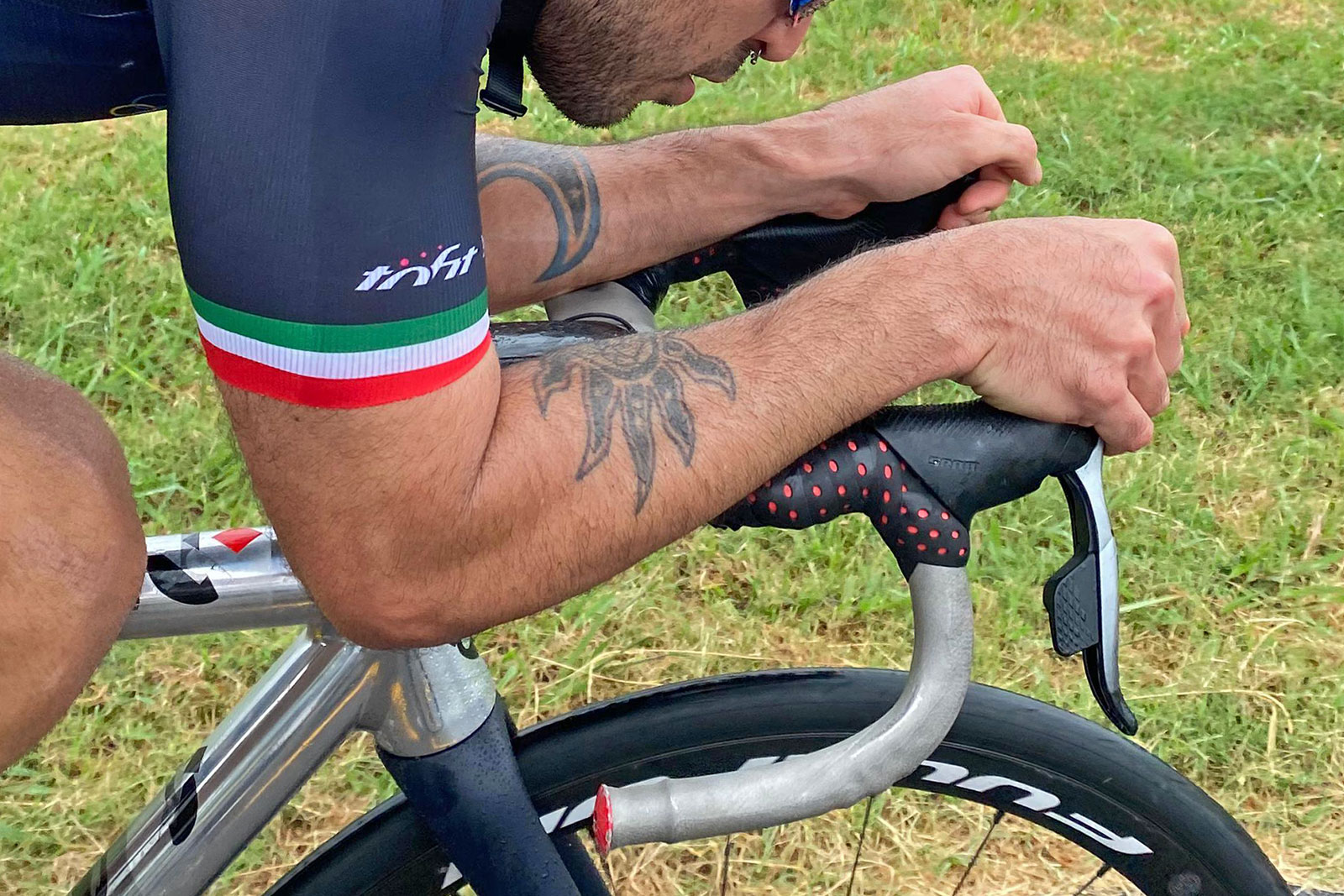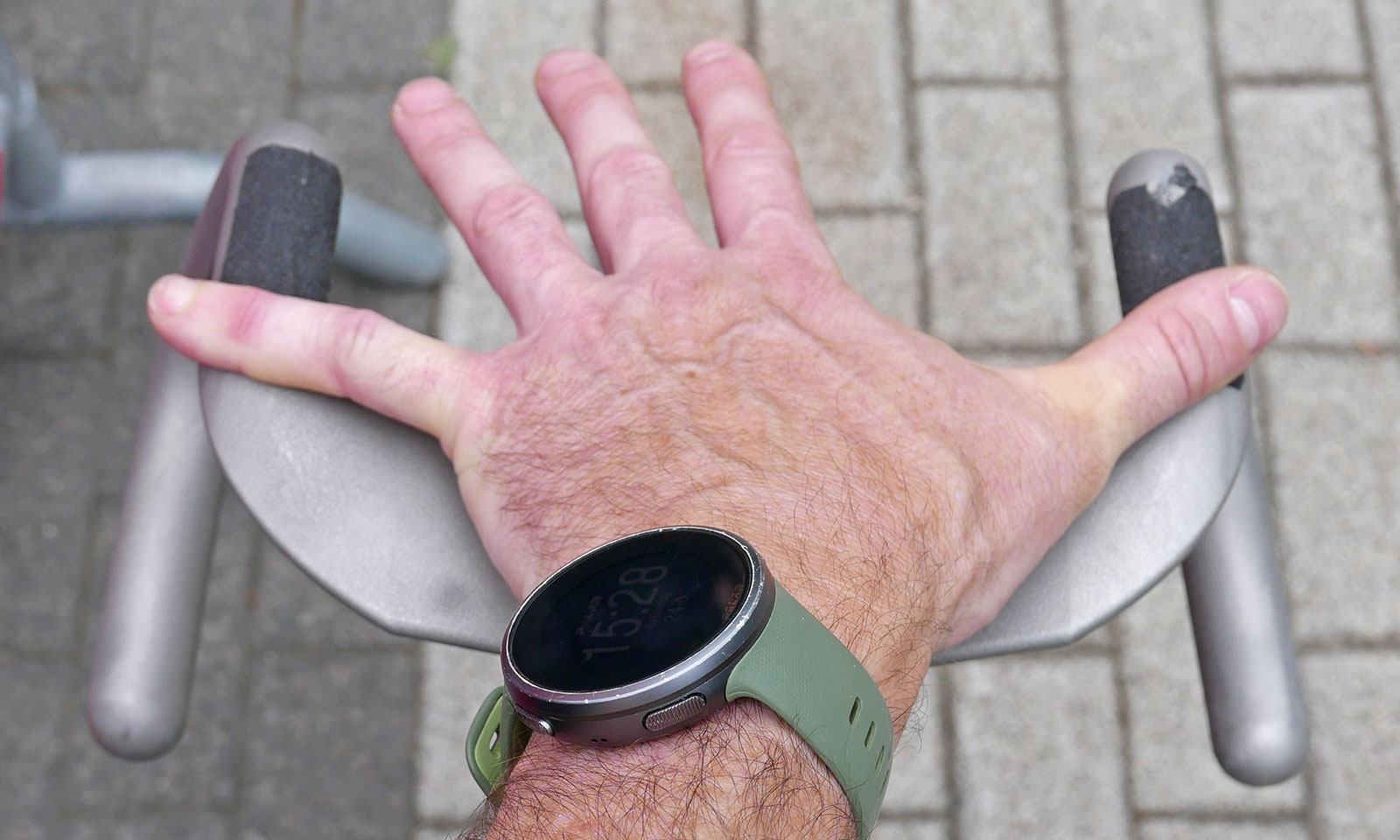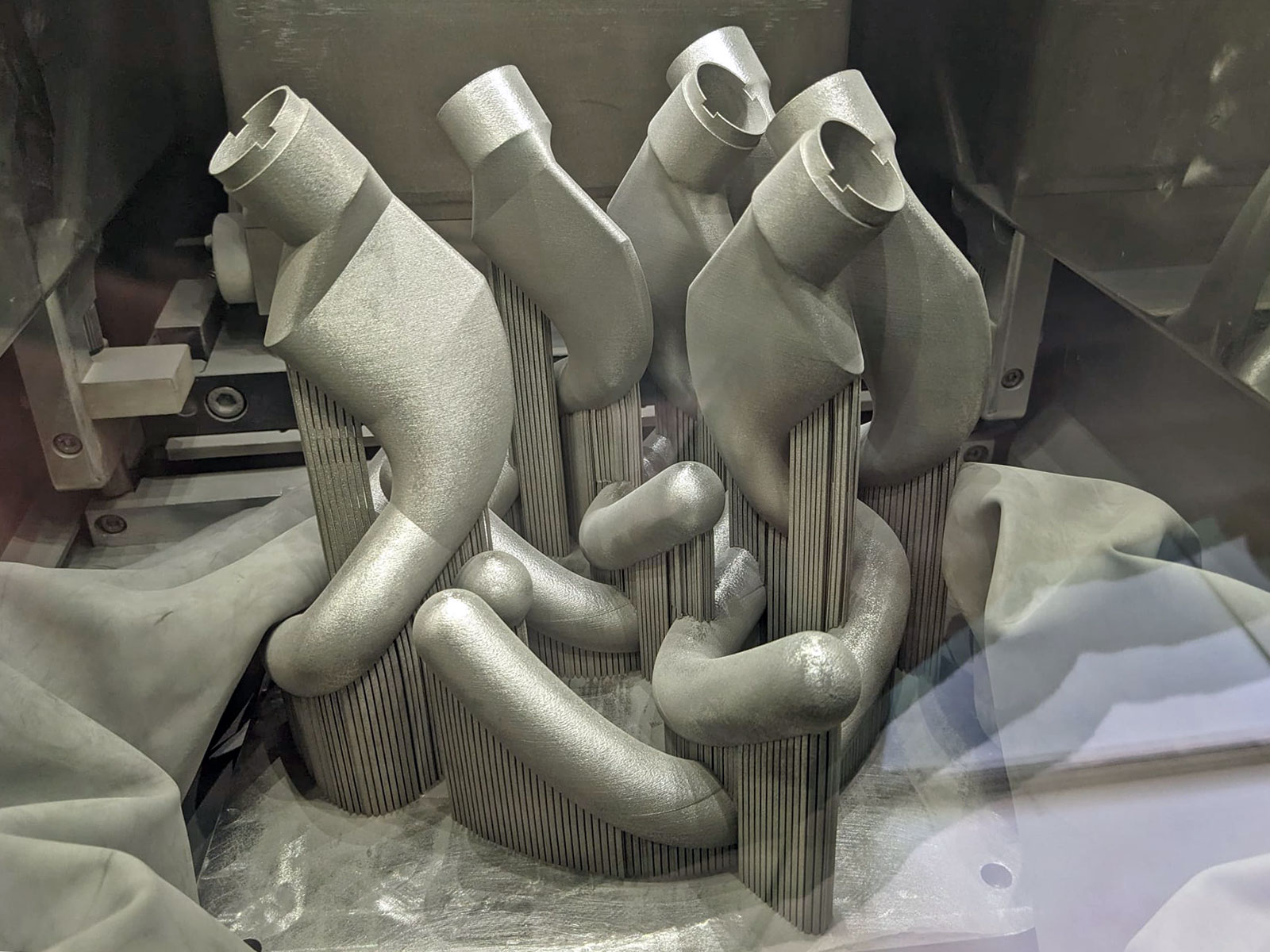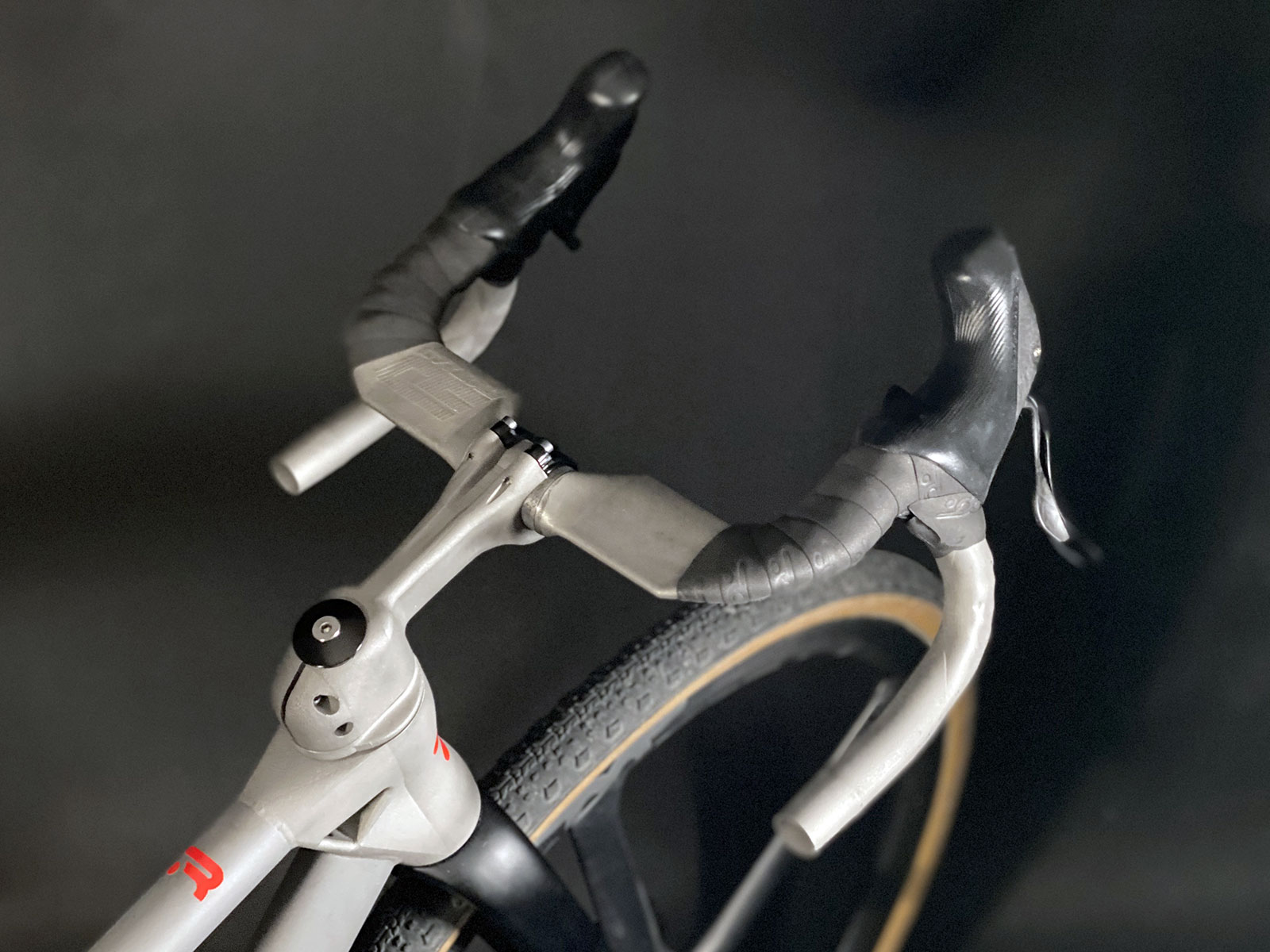Puppy paws & turned-in levers are out, but ultra-narrow super-aero bars are in – and TRed’s TOOT Racing has a UCI-compliant Ashaa RR solution. A bar first developed on the track, the Ashaa RR is a customizable super-narrow, flared & ultra-aero road handlebar designed to get you in the most aerodynamic position, without sacrificing safety or control. To quickly get bars into racers’ hands, Toot 3D-print the handlebars to fit the rider from stainless steel for maximum strength or titanium for additional weight savings.
Or if you have a little patience, weight weenies will be able to get an even lighter carbon Ashaa RR aero handlebar option soon. And it’ll be a lot cheaper too!
TRed’s TOOT Ashaa RR 3D-printed aero road handlebars

Aero gains are everything these days. And refining your position on the bike has always been one of the simplest and most effective ways to save watts. As much as brands like to sweat over the incremental improvements of hidden nipples or tweaked rim profiles, the rider still accounts for most of the drag on a bike at speed.
First developed on the track, then refined on the road

TT & Triathlon racers have long accepted that refining their hand position has been the best way to go faster. But road riders have been stuck with conventional drop bars, as the UCI continues to ban any alternate hand positions.

The latest UCI rules eliminated the “puppy paws” or “invisible aerobars” position for real safety concerns as riders weren’t actually holding onto their bikes in the bunch. So riders opted for turned in levers to keep their hands “on the bars”. But again, lightweight carbon bars were not designed for metal clamps at the unusual inward angles, so that got banned too.
Side note: I’ve both broken a bar off under the clamp in a small crash racing. And removed a ‘factory set’ lever to find the carbon bar crushed under the imperfectly installed metal lever clamp. So, I get the concern.

But pro racers want to go fast. And amateur riders like to emulate their pro cycling heroes. So, there needs to be a solution.
Italian bikebuilder TRed’s component division TOOT has been working on alternate ergonomic and aero handlebars for some time. We last caught up with their Ashaa bar on the track a couple years ago – when the patented it. Updated more last summer. But now, with more UCI restrictions on road racing, the customizable aerodynamic nature of that original bar seems like it could pay off even more. Both for pro and amateur racers alike.
This version then was developed and tested on the road & track with Argentinian former pro cyclist Facundo Lezica working with TRed/Toot’s Romolo Stanco. Then, proven with current Madison World Champ Jan-Willem van Schip.
What’s unique about the TOOT ASHAA RR bar?

TRed calls the TOOT ASHAA RR, the “first handlebar to guarantee an extremely aerodynamic position without compromising control and safety.” That gets to addressing all of the UCI’s concerns, it seems.

It is built around a unique narrow geometry that puts your hands further forward, higher, and closer together, than even a narrow conventional 38-42cm bar (all dimension discussed are measured center-to-center) at the hoods.
Note: UCI regulation dictates allowable outside dimensions for racing eligibility, which is why Toot lists those.
Ultra-narrow and complexly curved

That means a long bar Reach of 118mm and deep Drop of 105mm. That’s designed to fit with your same stem – your arms reach more forward as hands come closer together.

Width is wildly narrow at around 24cm wide at the hoods, which are slightly raised above the stem. Then, they lean the bars themselves in around 5° towards a clamping area, further rotated in another 5-10° to safely interface with turned-in levers – resulting in the end of your hoods being 19-21cm wide.
Wow, right?

Super narrow.
But the Ashaa RR road racing bars also feature dramatic (for the road) ~20° flare for a stable sense of control. Officially it is not “flare” as Toot explains that it is a non-linear curve (a key part of their patent). There are very few real straight angles on the bar. But the result is that it puts the ends of the drops 33-35cm wide. And the roomy drops feature angles to offer a natural-feeling position and plenty of stability.

It’s certainly a dramatically different position – something in between regular drops and aero bars. Yet even though you are narrow and leaning forward, the rider can keep their hands firmly held in the familiar stable position of a dropbar for maximum control.
How Much Faster?
“Both with low and high grip the position is stable and comfortable with perfect handling. From the data collected with the Velocomp Aeropod V5 pitot system – which detects the CdA in real time – my overall aerodynamic efficiency improves by more than 4%. This means that if with a normal 40cm handlebar at 320W I am at 45km/h, with the position that this handlebar allows me to assume (both on the controls and on the handlebar) I ride at 47km/h keeping the levers perfectly aligned with the handle. And remember that the more the speed increases, the wider the gap between the two values is.”
– Facundo Lezica, professional track & road cyclist, and ASHAA RR 3D designer
3D-Printing Tech

Of course, 3D-printing allowed TRed / Toot to quickly turn an idea into reality. But it also means they can customize the actual shape to best fit riders individually – much like we see in custom aero bars. But it is a bit simpler here, Toot refines a proposed shape with a custom bar buyer, then mocks-up a plastic dummy for final testing before printing a metal bar.
Their standard 3D-printed Ashaa RR is made from 316L stainless steel, which allows Toot to tailor strength & stiffness to individual rider needs as well. They say that can vary total bar weight from 360-480g.

They print each steel or ti bar in two interlocking halves, welded together in the middle (see inside, between where the stem clamps), and then ground perfectly smooth for a 31.8mm clamping area.
How strong is that?

This is a 3D-printed Toot Asheeta steel track bar I saw after a massive crash into the barriers last summer at something like 50km/hr, so hard that if folded-in the downtube (but didn’t crack any tubes or welds). And the bar is just scratched. And the ride walked away, although bleeding and missing some skin.
All bars are also compatible with full internal cable routing. In fact, Toot can also make you a custom carbon, aluminum, or titanium stem in any desired length to work with the most common internal routing systems.
Fully customizable in 3D-printed steel

They 3D-print the Ashaa RR in stainless steel in Italy at the University of Pavia. And offer either in this stock geometry. Or you can get a fully customizable size and shape to make it fit perfectly in your own hands and against your own forearms. Importantly, all custom bars are also stress and fatigue test certified by a industry 3rd party.
Toot even says that it can “also be customized for gravel“. We’re quite curious what we’d change to ride off-road. But at this price, they’ll make it whatever shape you need.
Lighter weight in Yottalight 3D-printed titanium

The bar is also available in the standard dimensions as the Toot Ashaa RR Yottalight. 3D-printed in titanium in Germany by ApWorks (a division of the Airbus group) to save weight without sacrificing strength. Weight savings over the optimized steel version is said to be about 15%.
More affordable AND lighter in carbon

If you want to save weight AND some cash – contrary to everything else in the bike industry – you can even pick carbon, instead. But you will have to wait a little longer. Toot manufactures the carbon bar with more conventional molding techniques. Although for now in 3D-printed steel molds in Italy for the early production. So only the stock size and shape is available. The carbon bar is also 2cm wider with wider wings up top, offering a bit more universal appeal.
Toot Ashaa RR – Pricing, options & availability

Essentially 4 versions of the new Toot Ashaa RR aero road racing handlebar are available. Standard geometry in 3D-printed steel for 1390€. Standard geometry in 3D-printed titanium or custom geometry in 3D-printed steel for 1990€. Or ‘just’ 429€ for the carbon bar if you pre-order now.
The 3D-printed bars are all made-to-order with a max 21 working day lead-time for standard geometry. Toot offers the carbon Ashaa RR bars as a pre-order until mid-February, with the first deliveries slated to begin at the end of Mach 2024.
What’s next?

One piece 3D-printed steel or titanium handlebar+stem cockpit combos?
Yeah, Toot is already working on that too. This is a custom Ashaa RR 1-piece cockpit in 3D-printed titanium!


